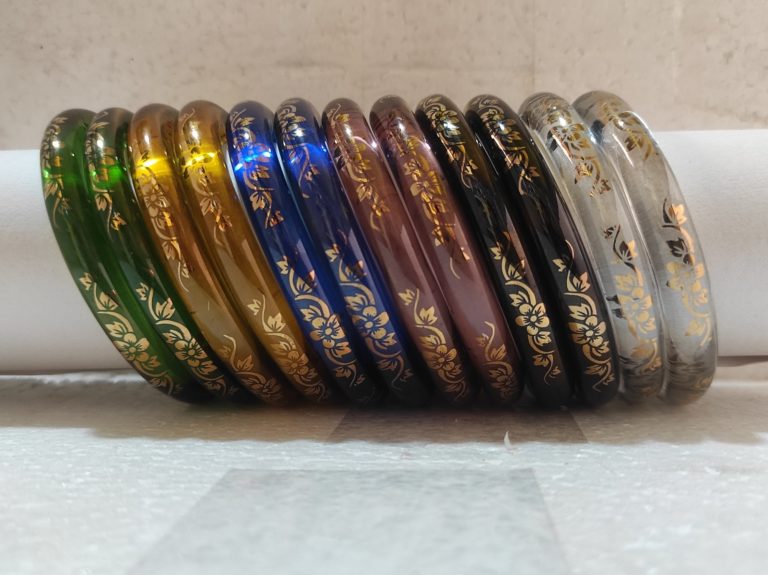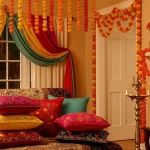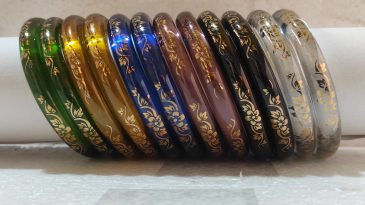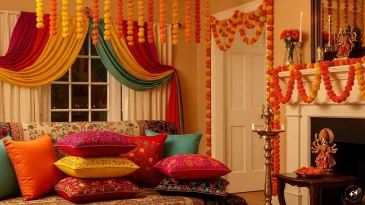- General
- Updated on October 1, 2025
Glass Bangles and Their Symbolism in Indian Traditions

Introduction
Jewelry in India has always been more than adornment—it carries deep cultural, social, and spiritual meaning. Among the many ornaments that hold timeless significance, glass bangles stand out, and understanding glass bangles and their symbolism reveals why they are one of the most cherished accessories for Indian women. From weddings to festivals, from everyday wear to sacred rituals, these delicate yet vibrant bangles are woven into the cultural fabric of India.
In this blog, we’ll explore the symbolism of glass bangles in Indian traditions, their historical importance, and why they continue to captivate generations of women.
A Timeless Tradition
Glass bangles are not a recent fashion accessory; they trace their roots back thousands of years. Archaeological findings from the Indus Valley Civilization reveal bangles made of shell, copper, and glass, highlighting how deeply embedded they are in Indian culture. Over time, glass became one of the most popular materials for bangles, not only because of its affordability but also because of its shimmering beauty and endless color variations.
For Indian women, wearing glass bangles is more than a style statement—it is a symbol of tradition, femininity, and emotional connection to their roots.
The Symbolism of Glass Bangles

1. Marital Status and Auspiciousness
In many parts of India, bangles signify a woman’s marital status.Traditionally, a married woman wears bangles to symbolize prosperity, happiness, and her husband’s long life. The gentle tinkling of glass bangles brings marital bliss and fills the household with positive energy.
2. Fertility and Prosperity
People believe glass bangles bring fertility and prosperity. In rituals, women use them to pray for children, family well-being, and abundance. During ceremonies, especially in South India, families gift bangles to expecting mothers in a function called Valaikaapu or Seemantham—a celebration of fertility and motherhood.
3. Color Symbolism
Each color of glass bangles carries its own meaning in Indian traditions:
- Red: Energy, passion, and marital bliss
- Green: Fertility, growth, and prosperity
- Yellow: Happiness and good fortune
- Blue: Wisdom and calmness
- Black: Protection from evil
- White: Purity and new beginnings
Women often choose colors depending on the occasion, season, or even astrological recommendations.
4. Spiritual Protection
In many cultures across India, glass bangles are seen as protective charms. They are believed to ward off negative energies and bring positive vibrations to both the wearer and her household.
Glass Bangles in Weddings and Festivals
No Indian wedding is complete without the presence of bangles. Brides often wear elaborate sets of glass bangles mixed with gold or metal ones, representing love, prosperity, and a new chapter in life. In states like Punjab, the Chooda ceremony involves the bride wearing a set of red and white bangles, symbolizing her transition into married life.
During festivals such as Diwali, Karva Chauth, and Teej, women adorn themselves with colorful glass bangles to celebrate femininity, devotion, and joy. The cheerful jingling sound is often said to invite happiness and divine blessings into the home.
A Blend of Tradition and Modernity
While glass bangles are rooted in tradition, they have also adapted beautifully to modern fashion. Designers and artisans are experimenting with new patterns, color combinations, and fusion styles that combine glass with metal or stones. Young women today wear glass bangles not only for rituals but also as stylish accessories that add elegance to both ethnic and contemporary outfits.
Their affordability and variety make them accessible to all, ensuring that glass bangles remain a cultural treasure passed down through generations.
The Emotional Connection
Beyond their cultural symbolism, glass bangles hold a profound emotional resonance for Indian women. They are not just adornments but tokens of life’s most intimate milestones. The first set of bangles gifted by parents often becomes a treasured keepsake, symbolizing love and protection. Similarly, the bangles worn on a wedding day are imbued with the sanctity of vows and the joy of new beginnings, making them priceless heirlooms of memory.
Festivals and celebrations also amplify their significance—choosing bangles to match a saree or lehenga is more than a matter of fashion; it’s a ritual of belonging, beauty, and festivity. The soft chime of glass bangles brushing against each other creates a melody that lingers in memory, a sound that often reminds women of their mothers, sisters, or even childhood traditions. For many, these jingles are not mere background notes—they are echoes of blessings, love, and shared happiness passed down through generations.
Also Read: The Future of Electric Public Transport in Indian Cities
Final Thoughts
Glass bangles are far more than ornaments. They embody tradition, spirituality, marital bliss, and feminine grace. Their symbolism in Indian culture speaks to the beauty of rituals that have survived centuries, adapting with time yet never losing their essence.
Even in today’s fast-paced, modern world, the sight and sound of glass bangles remain timeless—echoing the harmony of tradition and style, spirituality and joy.
Join the discussion
Related Articles
No results available
ResetTrending Articles


- General
- Updated on October 1, 2025


- General
- Updated on September 30, 2025


- General
- Updated on September 26, 2025


- Fashion
- Updated on September 25, 2025


- General
- Updated on September 23, 2025


- General
- Updated on September 22, 2025


- General
- Updated on September 18, 2025


- Health
- Updated on September 16, 2025


- General
- Updated on September 12, 2025


- General
- Updated on September 12, 2025
No results available
Reset


